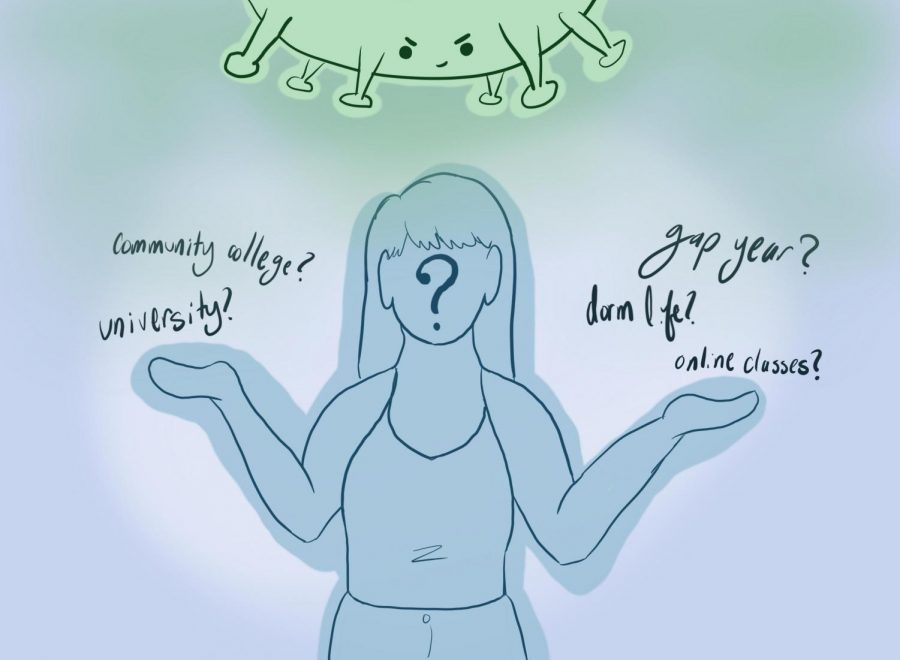OPINION: Coronavirus has vastly changed the college decision and admission process
Students now have many more factors to consider when deciding what the next chapter of their life will look like.
As a result of the global coronavirus pandemic and extreme economic uncertainty, many higher education facilities have extended the National College Decision deadline to June 1 from the original date of May 1. More than ever, this time has proven to be very stressful for both colleges and high school seniors. The enrollment upheaval will multiply challenges in higher education that have been brewing for years because of demographic shifts and economic factors.
Heightened by fears of a sharp economic slowdown, more students and families are now more likely to choose local and affordable schools rather than the pricier and more prestigious options. In the wake of COVID-19, many new considerations have arisen, such as whether students will share dorms. Rumors surrounding an online first semester may settle some unrest concerning social distancing, but there is no guarantee that students will feel comfortable sharing a dorm when they do return to campus.
At the same time, school budgets are dependent on fall enrollment, and pushing back decision day makes them more vulnerable to loss of tuition revenue. Adding to the burden is the likelihood that fewer international students will enroll for the upcoming academic year, which will be problematic for colleges that bank on them. This has led to an increase in schools trying to recruit more students who fall short of the academic merit requirements, but at a time where the schools are placed under such duress. Colleges are handing out more acceptances than usual in hopes of making up for any shortcomings due to the pandemic.
Students who typically wouldn’t have been accepted to certain schools in past years have now been admitted. The school’s desperate need for tuition revenue may come at the price of a student dropping out in the future if they are not able to handle the course load. Not only will this hurt the student but will also make the school look bad in the long run, dropping graduation rates.
Over the last decade, deep cuts in state funding for higher education have put pressures on schools to admit students who need less aid to cover massive operating budgets. This is a big reason as to why so many schools have come to rely on the revenue from international students who typically pay top dollar. According to the National Association of International Educators, restrictive student visa policies and changing attitudes about studying in the U.S. is likely to stem the flow of international students, who contributed $41 billion to the national economy in the 2018-2019 school year.
As a result, such students may not be able to be as fortunate in receiving financial aid offerings. Currently, about two-thirds of all full-time students receive aid, which is the single most important factor in determining access to a college education.
According to the Princeton Review, for college-bound students and their parents, a whopping 99% of families said financial aid would be necessary to pay for college and 87% said it was “extremely necessary.” Some states, especially in the Northeast and Midwest, are producing fewer high school graduates, shrinking the pool of potential college applicants. Many colleges also struggle to recruit students from low-to-moderate income families and those whose parents didn’t go to college.
There will be major enrollment challenges in the next few months for both public and private colleges across the nation that were already scrambling to fill seats and meet tuition revenue targets before the novel coronavirus emerged in China. These problems will only be compounded if disadvantaged students are not guided in the right direction by colleges and universities.


